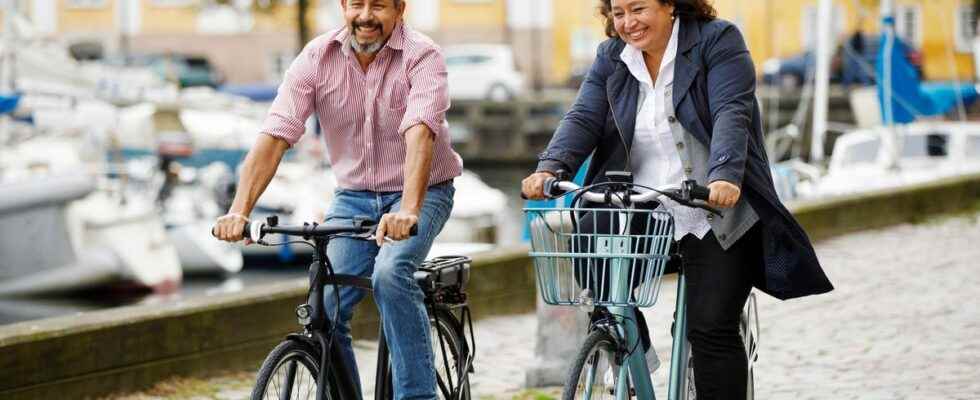Published on
Updated
Reading 2 mins.
Electric bikes are on the rise. Praised by cyclists who make many journeys, electrically assisted bicycles would however be less physically demanding, according to a study. Nevertheless, they remain, according to the researchers, a good alternative for the elderly, for example, who otherwise would not ride a bicycle.
The number of e-bikes in circulation has jumped in recent years, from 98,000 in 2006 to around 3.4 million bikes sold in European Union countries in 2019. Estimates put this figure at 62 million by 2030, and the same increase is expected in Asia and the United States.
What about the electric bike?
But what is the electric bike really worth? Is it equivalent to the traditional bicycle? This is the question posed by German researchers. They carried out an observational study, including 1250 electric cyclists and 629 conventional cyclists throughout Germany. They then compared their recommended weekly goals of 150 minutes of moderate physical activity or 75 minutes of vigorous physical activity.
Detailed follow-up thanks to activity trackers
For this, the participants were asked to provide information on their quality of life, their daily physical activity and their health problems. Finally, users had to record their driving time, the distances traveled and their heart rate on each of their bike rides, for a month, using a smartwatch activity tracker.
Less effort on an e-bike
Results: E-bikes do not help users meet their weekly moderate-to-vigorous physical activity goals. Indeed, by studying the data, the researchers found that e-bike cyclists tend to make fewer and less physically demanding journeys than conventional cyclists.
They have in fact achieved 70 minutes of intense activity less than cyclists on a conventional bicycle. In addition, the weekly trips of traditional cyclists were more numerous than those of electric-assisted cyclists.
Finally, the average heart rates of conventional cyclists were also higher with 119 beats per minute compared to 111 beats per minute for electric cyclists.
Good for elderly or obese people
However, the picture is not completely negative for the scientists, who point out that e-bikers tend to be older and more obese than cyclists. E-bikes can therefore help them get around on two wheels, something he wouldn’t otherwise consider.
Their conclusions confirm those of previous studies showing that “The e-bike offers the ability to continue cycling despite physical limitations and has the potential to maintain activity and fitness“.
